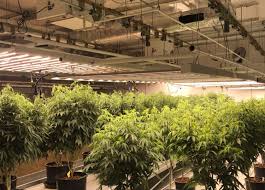When designing a commercial grow area, HVAC (Heating, Ventilation, and air conditioning) systems play an important part in ensuring that the conditions are optimal for plant growth. Proper HVAC design will ensure that the plants are provided with the right temperatures, humidity and airflow that are crucial to maximize yield and quality. Here’s what you need to be aware of concerning commercial grow room hvac design.
1. Temperature Control
The right temperature is crucial to the health of plants and their productivity. Grow rooms typically require a consistent temperature range, but this is dependent on the species of plant. The optimal temperature is between 70degF to 85degF (21degC up to 28degC) during the day, and slightly cooler at night. HVAC systems must be able to provide precise temperature control, so that they do not cause the stress that plants experience, which could result in a slow growth or lower yields.
2. Humidity Management
The humidity levels directly affect plant growth, the uptake of nutrients and prevention of diseases. High humidity can lead to mold and mildew, while low humidity can lead to dehydration and nutrient deficiency. An effective HVAC system includes dehumidifiers or humidifiers to regulate moisture levels. Generally, humidity should remain between% to 60% in the vegetative stage and just a little lower during flowering time to avoid the growth of mold.
3. Air Circulation and Ventilation
Good air circulation and ventilation are essential for even temperature distribution and keeping air from becoming stagnant. This is accomplished by installing ductwork and fans in order to ensure that air moves freely throughout the growing space. A proper ventilation system also assists in the elimination of humidity and heat, which reduces the chance of pests and diseases. Additionally, carbon filters or ozone generators could be used to control odors and maintain air quality.
4. CO2 Enrichment
For commercial greenhouses CO2 enrichment is typically used to boost plant growth and increase yields. HVAC equipment can be incorporated to CO2 controllers and sensors in order to ensure optimal levels of CO2 usually around 1000 or 1,500 ppm (parts per million). This enhances photosynthesis and improves the productivity of plants, particularly in environments with high intensity growth.
5. Energy Efficiency
Given the high energy demands of grow rooms the efficiency of energy is a major consideration. The latest HVAC equipment is designed to cut down on energy consumption while maintaining optimal conditions for growing. Features such as variable speed fans, thermostats with programmable settings and energy-efficient compressors could help reduce operational costs. Installing an energy management program could improve performance and decrease energy consumption.
6. System Maintenance
Regular maintenance is essential for the long-term durability and efficiency in HVAC units. This includes cleaning filters, checking ductwork for leaks, and ensuring all components are functioning correctly. Regular maintenance can help avoid costly repairs and ensures that the system continues to create the perfect conditions for growth of plants.
In cannabis climate control is essential for the success of a commercial grow room. By paying attention to temperature control as well as humidity management, air circulation, CO2 enrichment and energy efficiency, as well as regular maintenance, growers can create an environment that supports an optimum growth rate for plants as well as increases yield.

